Basbousa Recipe (Semolina Cake)
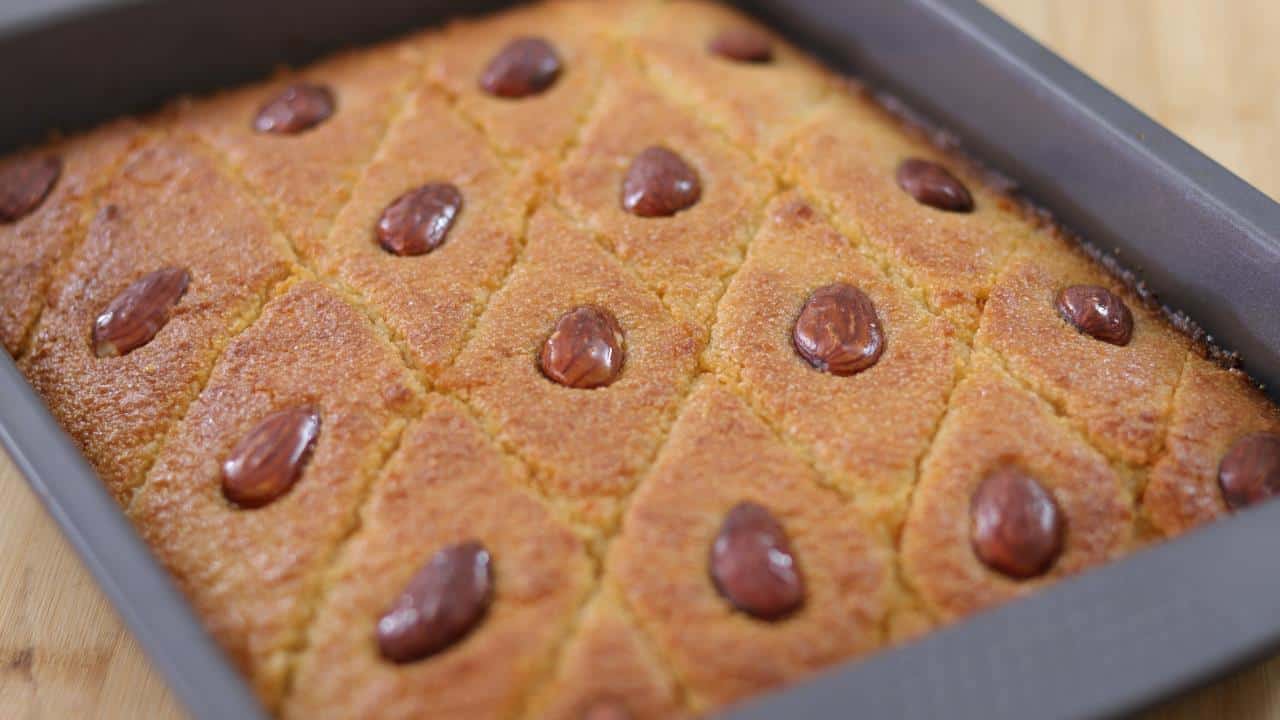
Learn how to make Basbousa, an authentic Egyptian semolina cake soaked in syrup, perfect for Ramadan and other occasions. Easy Basbousa Recipe!
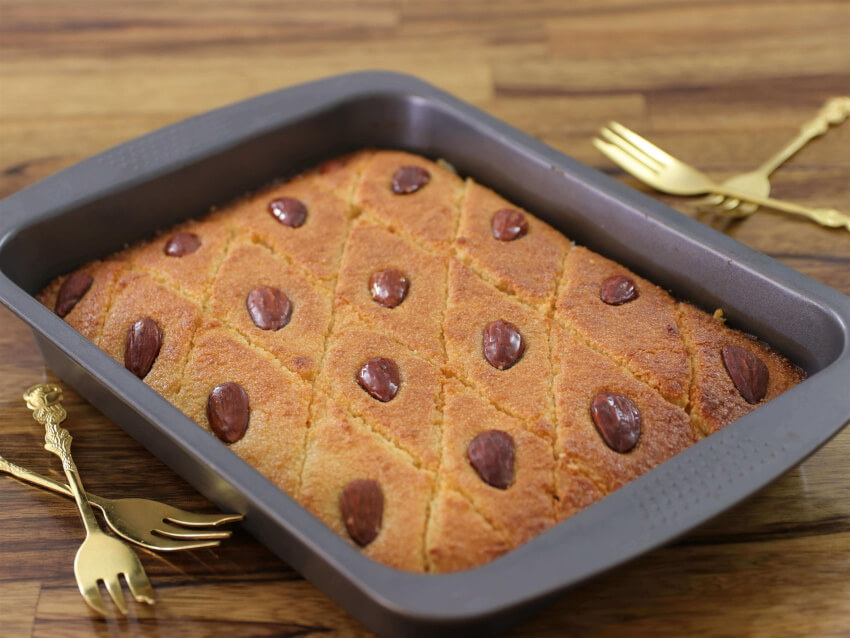
What is basbousa?
Basbousa, also known as semolina cake, is a beloved traditional dessert originating from Egypt and a staple among Middle Eastern recipes. This sweet, syrup-soaked cake is primarily made from semolina and often includes coconut, making it rich and flavorful. Each region has its own twist on the classic Basbousa Recipe, with some variations incorporating yogurt or almonds. Popular during festive occasions, especially Ramadan, Easy Basbousa Recipe guides offer a straightforward approach to making this delightful treat at home. Whether you’re a novice or an experienced cook, learning How to Make Basbousa can add a taste of Middle Eastern elegance to your culinary repertoire.
Ingredients for Basbousa recipe
The ingredients for Basbousa, a traditional Middle Eastern dessert, each play a crucial role in creating its unique texture and flavor. Here’s a breakdown of the key components in this beloved semolina cake:
- Semolina – Semolina is the primary ingredient in Basbousa, providing the cake with its characteristic grainy texture and slightly nutty flavor. It absorbs the syrup well, ensuring the cake is moist and rich.
- Plain Flour – Flour is used to bind the ingredients together, giving the cake a firmer structure and helping it hold its shape once soaked in syrup.
- Sugar – Sugar sweetens the cake and contributes to its golden-brown crust. In the syrup, it creates a sweet, sticky glaze that infuses the cake with additional sweetness and moisture.
- Desiccated/Shredded Coconut – Coconut adds a chewy texture and tropical flavor to the cake, complementing the semolina’s nuttiness.
- Butter – Melted butter enriches the cake, adding moisture and a rich, creamy taste that balances the semolina and coconut flavors.
- Eggs – Eggs help to bind the mixture together and contribute to the cake’s rise and fluffiness.
- Vanilla Extract – Vanilla adds a subtle aroma and flavor depth, enhancing the overall taste profile of the Basbousa.
- Plain Yogurt/Sour Cream – Yogurt or sour cream introduces acidity and fat, which tenderize the cake, making it soft and moist.
- Baking Soda – Baking soda acts as a leavening agent, helping the cake to rise and achieve a light, airy texture.
- Salt – A pinch of salt is crucial for balancing the sweetness and bringing out the individual flavors of the other ingredients.
- Almonds – Often used as a garnish, almonds provide a delightful crunch and decorative touch to each slice of cake.
- Water and Lemon Juice – These are used in the syrup, with lemon juice adding a fresh, tangy contrast to the sweetness.
- Rose Water/Orange Blossom – This adds a floral aroma that is signature to many Middle Eastern desserts, elevating the sensory experience of the Basbousa.
Each ingredient is essential, working in harmony to create the distinctive taste and texture of this traditional Basbousa Recipe. Whether you’re exploring How to Make Basbousa or refining your skills, understanding the role of each component can enhance your baking process and final product.
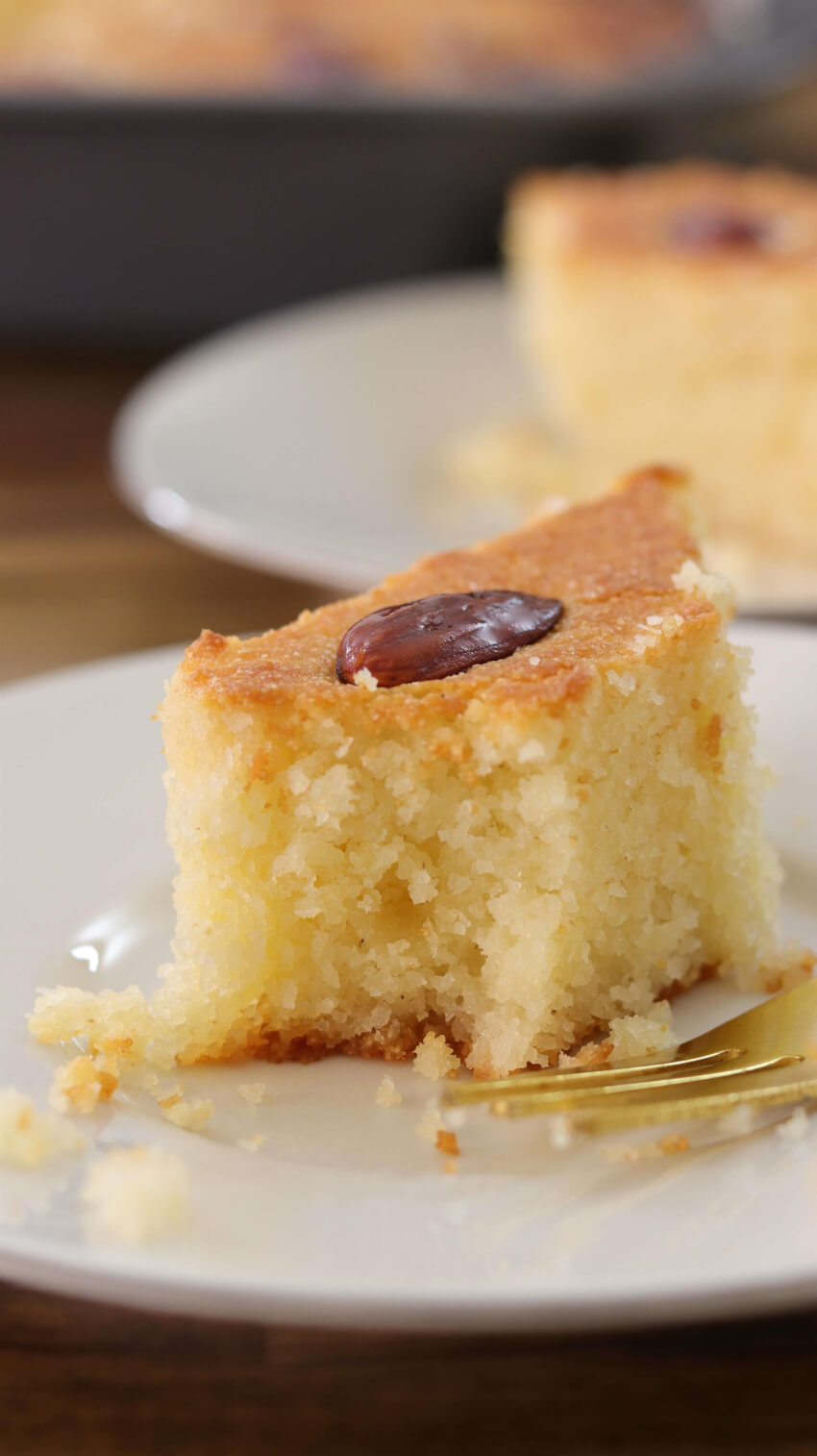
How to make the best basbousa?
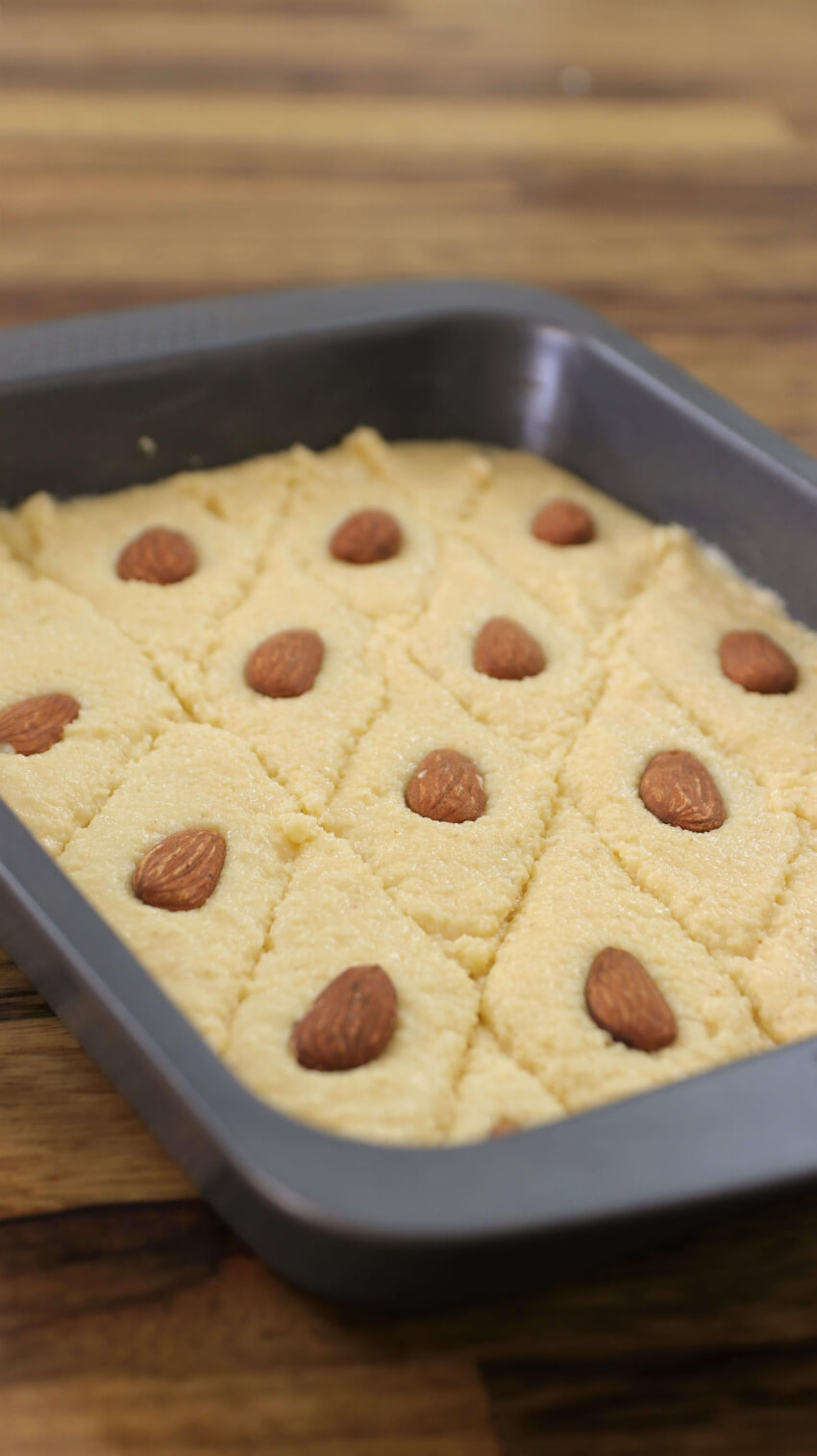
Creating the perfect Basbousa, a classic Middle Eastern dessert, involves more than just following a recipe; it’s about mastering a few key techniques and understanding the nuances that elevate your semolina cake. Here are some important tips to help you make the best Basbousa:
- Quality of Ingredients
- Semolina: Use fine semolina for a smoother texture. The coarser the semolina, the grainier your cake will be.
- Butter: Opt for high-quality unsalted butter, which will enhance the flavor without making the cake too salty.
- Yogurt: Full-fat yogurt or sour cream is preferable for a richer taste and moister cake.
- Mixing the Batter
- Do not overmix the batter once you add the semolina, flour, and baking soda. Overmixing can make the cake tough instead of light and fluffy.
- Ensure your eggs, butter, and yogurt are at room temperature to blend more smoothly and create a uniform texture.
- Pre-cutting the Cake
- Before baking, pre-cut your Basbousa into diamonds or squares. This not only creates the traditional appearance but also makes it easier to soak the syrup evenly into the cake.
- Place an almond in the center of each pre-cut piece for a visually appealing garnish that also adds a nice crunch.
- Syrup Consistency
- The syrup should be neither too thick nor too thin. If it’s too thick, it won’t soak into the cake properly. If it’s too thin, the cake may become soggy.
- Add the syrup to the hot cake right after it comes out of the oven. This helps the cake absorb the syrup better, distributing the sweetness and moisture evenly.
- Baking Time and Temperature
- Monitor the cake closely towards the end of baking. Basbousa should be golden brown on top; an undercooked basbousa can be too wet, while an overcooked one can dry out.
- Allow the cake to cool in the pan for at least 10 minutes after pouring the syrup. This resting period helps the syrup to be absorbed thoroughly and the flavors to meld together.
- Flavor Enhancements
- For a subtle variation, consider adding a pinch of cinnamon or cardamom to the batter.
- Experiment with rose water or orange blossom water in the syrup for a delightful floral note typical of many Middle Eastern desserts.
- Serving
- Basbousa is best served at room temperature or slightly warmed. It pairs beautifully with a cup of strong coffee or tea.
- Store any leftovers in an airtight container to maintain freshness and moisture.
By following these tips, you’ll be well on your way to making an irresistible Basbousa that’s authentically rich and wonderfully moist—a true celebration of Middle Eastern flavors. Whether you’re a novice or an experienced baker, these insights can help enhance your Easy Basbousa Recipe.
What equipment do you need to make the best basbousa?
You might already have most of the equipment needed to make Basbousa, but here is the full list to ensure you have everything required:
- Mixing Bowls: You’ll need several mixing bowls of various sizes to mix the dry and wet ingredients separately before combining them.
- Electric Mixer or Whisk: An electric mixer is helpful to cream the eggs and sugar until light and fluffy, although a manual whisk can also be used.
- Measuring Cups and Spoons: Accurate measurement of ingredients is crucial for the consistency and success of the recipe, so a full set of measuring cups and spoons is essential.
- 9×9-inch square pan: The traditional shape for Basbousa is either a square or a round pan. Ensure it’s deep enough to hold the batter and the syrup. You also can use 9-10 round cake pan.
- Saucepan: Needed for making the syrup, a medium-sized saucepan will work best.
- Silicone Spatula or Wooden Spoon: Useful for mixing ingredients and ensuring you can scrape the sides of the bowl effectively.
- Cooling Rack: Once the Basbousa is baked, placing it on a cooling rack will help it cool evenly without becoming soggy.
- Sharp Knife: A sharp knife is necessary to cut through the Basbousa after baking to ensure clean and precise pieces.
Having these tools on hand will streamline your baking process, enhance the final texture and appearance of your Basbousa, and ensure each piece is perfectly soaked with syrup.
If you want to learn more about must have baking tools, don’t miss our article on the 10 Highly Recommended Baking Tools to discover essential gadgets that can elevate your baking game
* Please note that some of the links above are affiliate links and I may earn a commission if you purchase through those links.
More Middle Eastern Desserts you might like:
- Baklava recipe
- Malabi
- Kunafa Recipe
- Lebanese Nights Dessert
- Maamoul Recipe | Semolina Stuffed Cookies
- Rolled Baklava
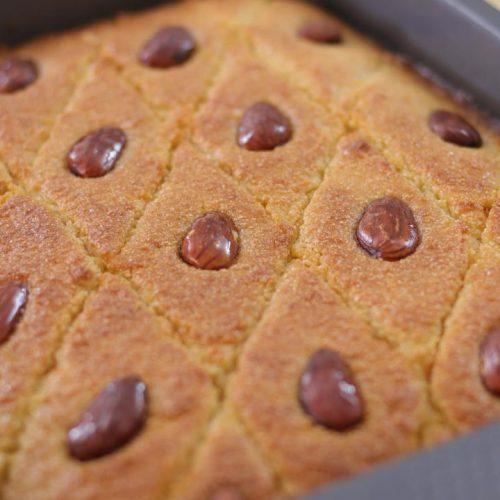
Basbousa Recipe (Semolina Cake)
Ingredients
For the Cake:
- 1½ cups 270g Semolina
- ½ cup 65g Plain Flour
- ¾ cup 150g sugar
- 1 cup 90g desiccated/shredded coconut
- ½ cup 115g Butter, melted
- 3 eggs
- 1 teaspoon Vanilla extract
- 1 cup 230g Plain yogurt/Sour cream
- 1 teaspoon Baking soda
- ¼ teaspoon Salt
- Almonds blanched or regular
For the syrup:
- 1½ cups 300g Sugar
- 1½ cups 360ml Water
- 1 teaspoon Rose water/orange blossom
- 2 tablespoons Lemon juice
Instructions
- DIRECTIONS1. Preheat oven to 180C (360F). Grease an 9x9-inch (23cm) or a 9-10” (23-26cm) round cake pan with butter. 2. In a large bowl beat egg with sugar until light and pale. Add melted butter, vanilla extract, yogurt, and beat on low speed until incorporated. add semolina, flour, coconut, baking soda and salt. Mix until combined. 3. Transfer the mixture into the pan and spread evenly. Cut a diamond or square design in the cake with a butter knife. Place an almond in the center of each diamond. 4. Bake for 35-40 minutes or until golden brown. 5. Meanwhile make the syrup: in a small saucepan place water and sugar, place the saucepan over medium-high heat until boils. Reduce the heat to medium-low, add lemon juice, rose water and simmer for 10 minutes. 6. Cut the cake again along the pre-cut lines and pour the syrup over the cake while the cake is still hot. Let cool before serving.Want more delicious recipes like this one? Subscribe to our newsletter for exclusive updates, mouthwatering recipes, and inspirational recipes straight to your inbox.
 FAQs
FAQs
Can I use something other than semolina for Basbousa?
Traditional Basbousa recipes call for semolina for its unique texture. However, fine cornmeal or a mixture of cornmeal and all-purpose flour can be used as a substitute, though the texture and flavor will differ slightly.How do I prevent my Basbousa from becoming too dry?
To prevent Basbousa from drying out, ensure you use enough syrup and pour it over the hot cake as soon as it comes out of the oven. The hot cake absorbs the syrup more efficiently, resulting in a moist dessert.What makes the syrup for Basbousa unique?
The syrup for Basbousa often includes flavors like rose water or orange blossom water, adding a distinctive floral aroma that complements the sweetness. The syrup should be made just before the cake finishes baking so it can be poured over the hot cake.Can I make Basbousa without coconut?
Yes, you can make Basbousa without coconut. While coconut adds a chewy texture and rich flavor, omitting it won’t drastically affect the structure of the cake, and you can increase the semolina slightly to adjust.How long can I store Basbousa?
Basbousa can be stored in an airtight container at room temperature for up to 3-4 days or refrigerated for up to a week. Ensure it is well-covered to prevent it from drying out.
Is there a vegan version of Basbousa?
Yes, to make vegan Basbousa, replace the butter with a plant-based alternative, use a vegan yogurt or simply water, and substitute the eggs with a vegan egg replacer or more baking soda and vinegar to help the cake rise.How do I know when Basbousa is perfectly baked?
Basbousa is perfectly baked when it has a golden-brown color on top and the edges pull slightly away from the sides of the pan. A toothpick inserted in the center should come out clean or with a few moist crumbs.Can I freeze Basbousa?
Yes, Basbousa freezes well. Wrap the cake slices individually in plastic wrap and store them in a freezer-safe container. Thaw at room temperature before serving. Syrup-soaked Basbousa should be eaten within a month for best taste.How can I add nuts to my Basbousa?
Nuts like almonds or pistachios can be added to Basbousa by sprinkling them on top before baking or embedding them into the cake after the initial cutting, before it goes into the oven.What is the best way to cut Basbousa?
The best way to cut Basbousa is to pre-cut the cake into diamonds or squares before baking. This helps in even absorption of the syrup and creates a beautiful presentation.Can I make Basbousa without eggs?
Yes, eggs can be omitted for a denser Basbousa. Increase the baking soda slightly, and ensure your batter has enough moisture from other sources like yogurt or milk to compensate. Additionally, using a binding ingredient like flaxseed meal or chia seeds mixed with water can also substitute for the binding properties of eggs. But remember: without eggs, the cake may be denser and less fluffy.What kind of semolina should be used when making basbousa?
For making Basbousa, it's best to use fine semolina. Fine semolina is ground more finely than coarse semolina, which results in a smoother texture in the final cake. This fine grind absorbs the syrup well, ensuring that the Basbousa is moist and has a tender crumb. Using fine semolina also helps achieve the characteristic dense yet soft texture that Basbousa is known for. Coarse semolina can be used as well, but it will give the cake a grainier texture, which might be less desirable depending on personal preference. Some recipes might mix a little bit of coarse semolina with fine semolina to introduce a bit of textural contrast, but generally, fine semolina is the preferred choice for classic Basbousa recipes.What Country is Basbousa Originally From?
Basbousa is originally from Egypt, where it is a traditional dessert enjoyed widely across the country. This sweet, syrup-soaked cake has roots in Egyptian cuisine and has become popular throughout the Middle East and other regions. Often associated with hospitality and special occasions, Basbousa is a beloved treat in Egyptian culture and beyond, known for its delightful texture and rich flavors.What is semolina?
Semolina is a coarse, purified wheat middling of durum wheat mainly used in making pasta and bread. It has a pale yellow color and a slightly earthy flavor. The granules of semolina are larger than that of regular wheat flours, which helps create a firmer texture in foods. Semolina is particularly popular in Mediterranean and Middle Eastern cuisines, not only for pastas but also for a variety of baked goods, porridges, and desserts like Basbousa, where its ability to absorb flavors and maintain structure under wet conditions is highly valued.

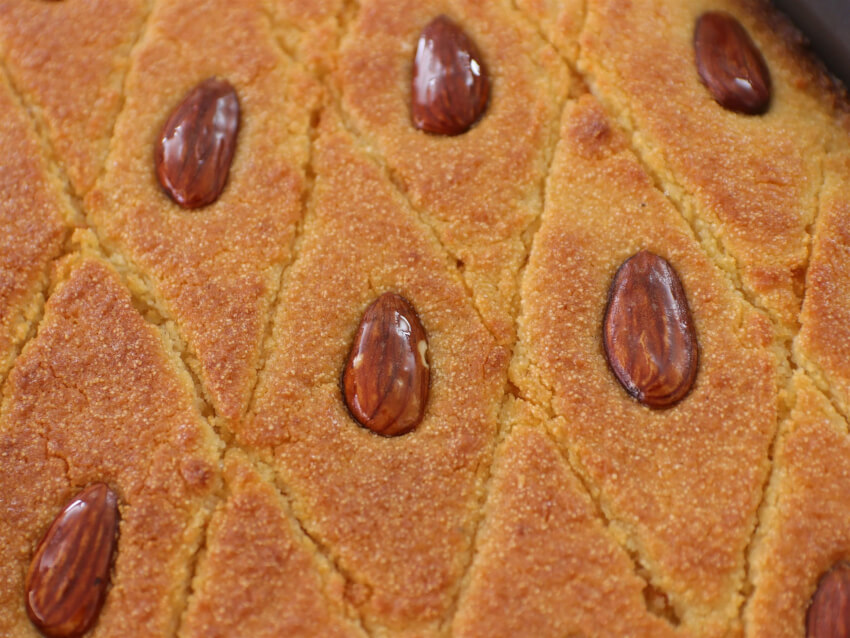
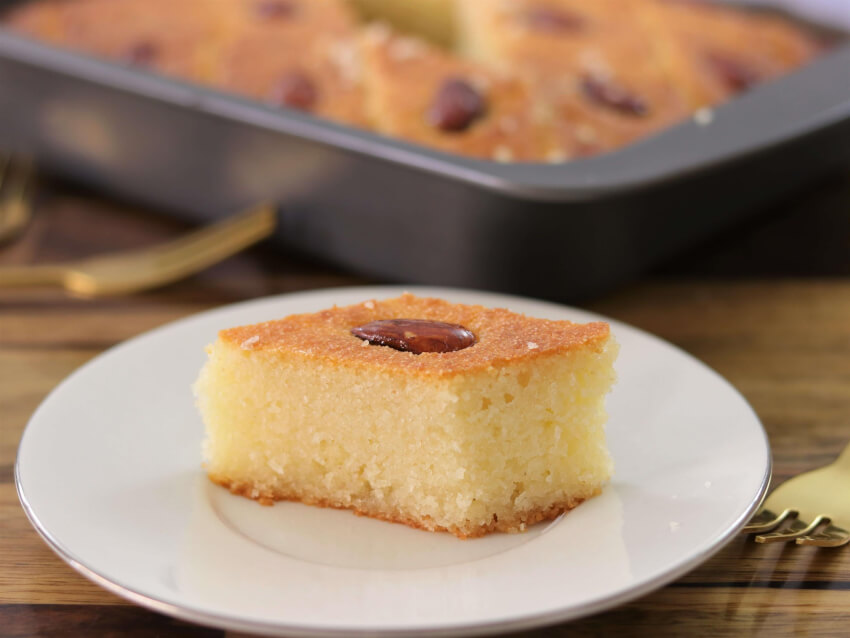
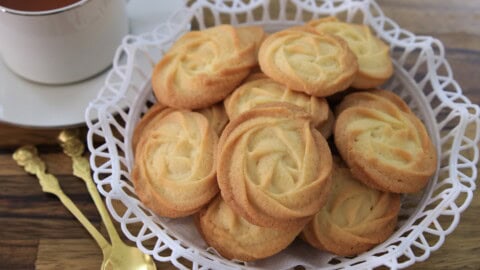

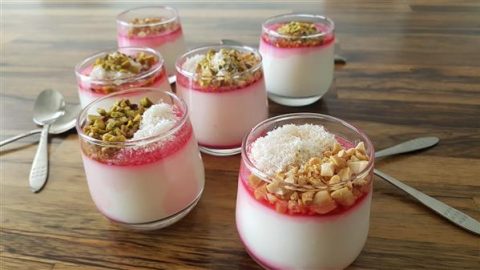
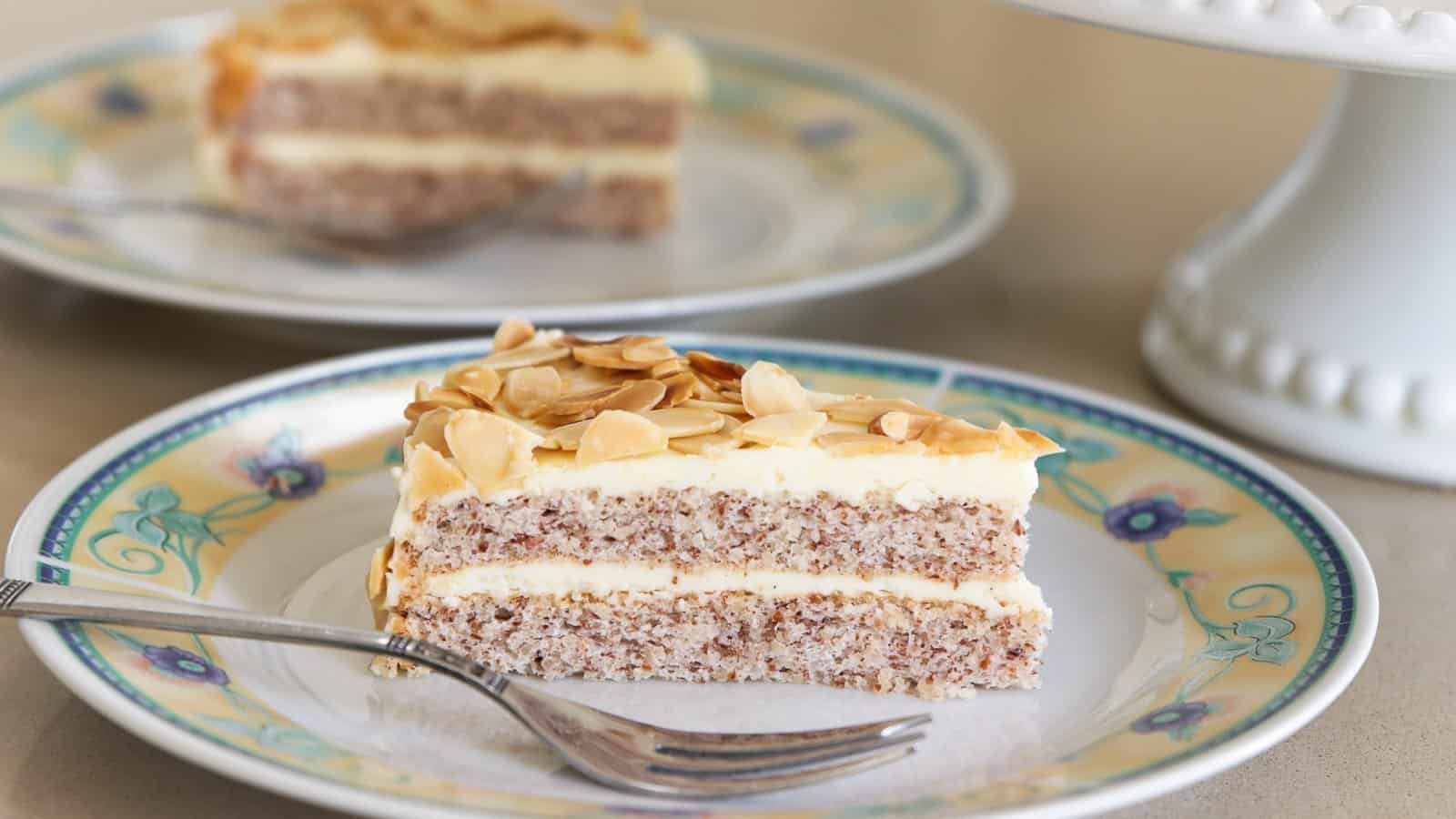
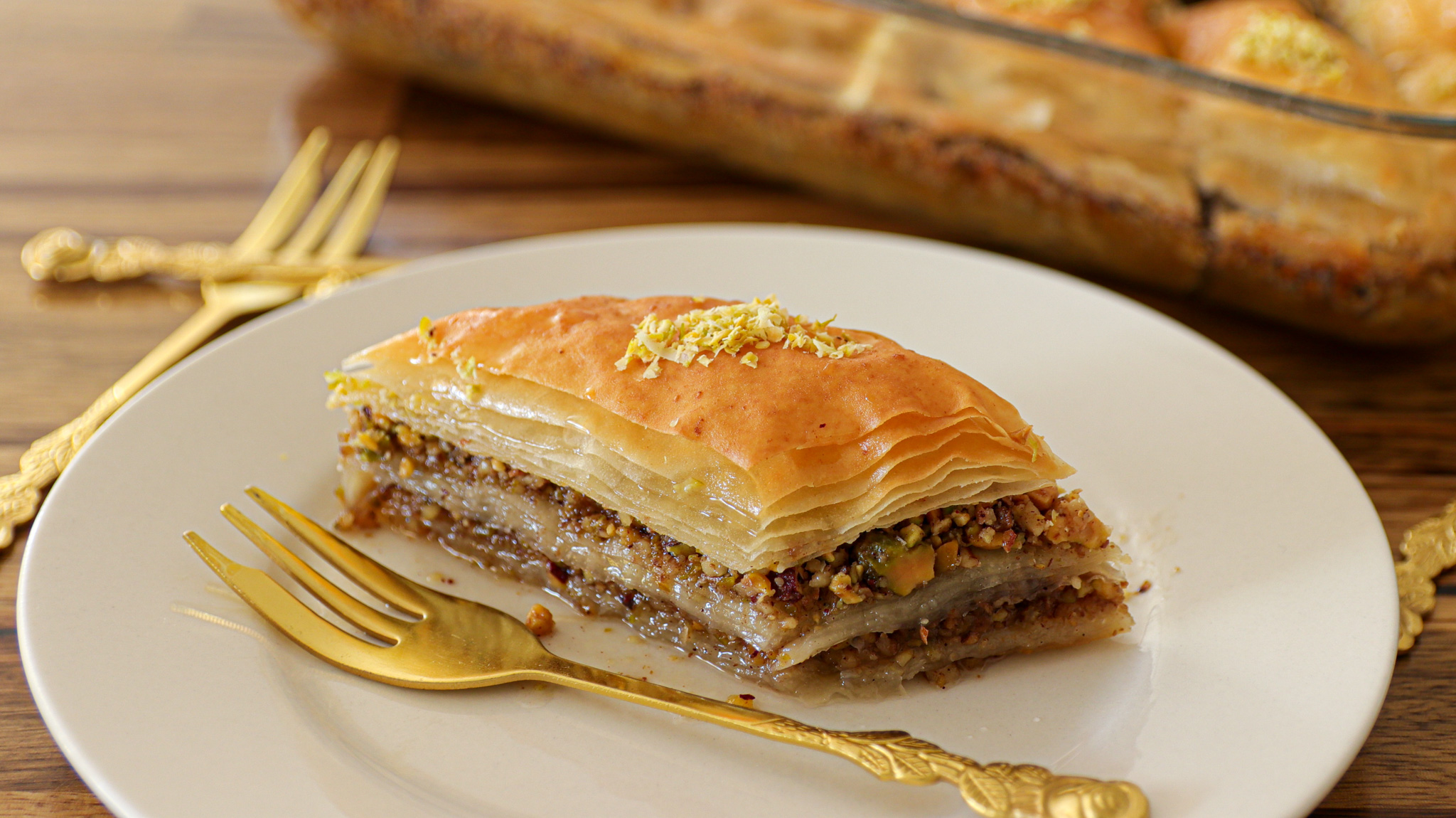
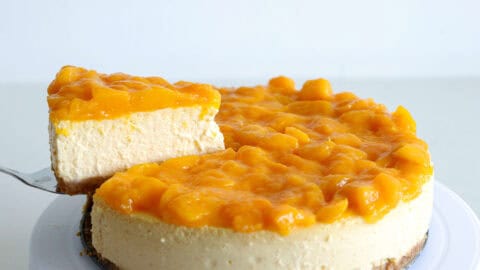
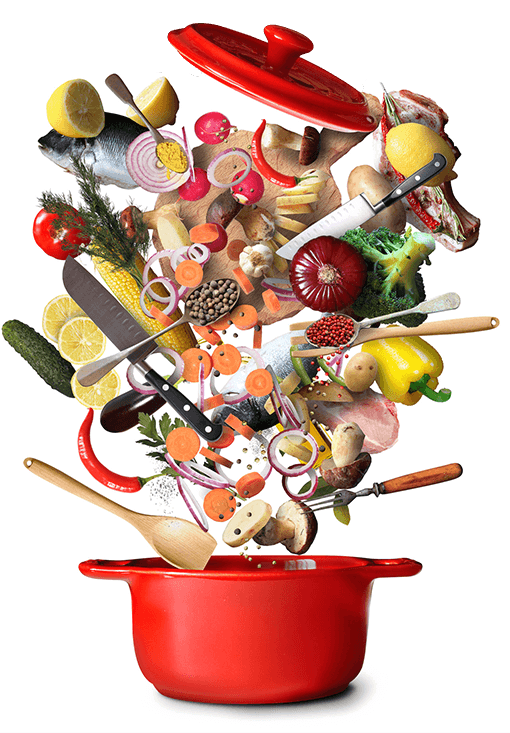

Beautiful recipes as always
Thank you! 🙂
Made it twice this month. delicious!
how can I make eggless?